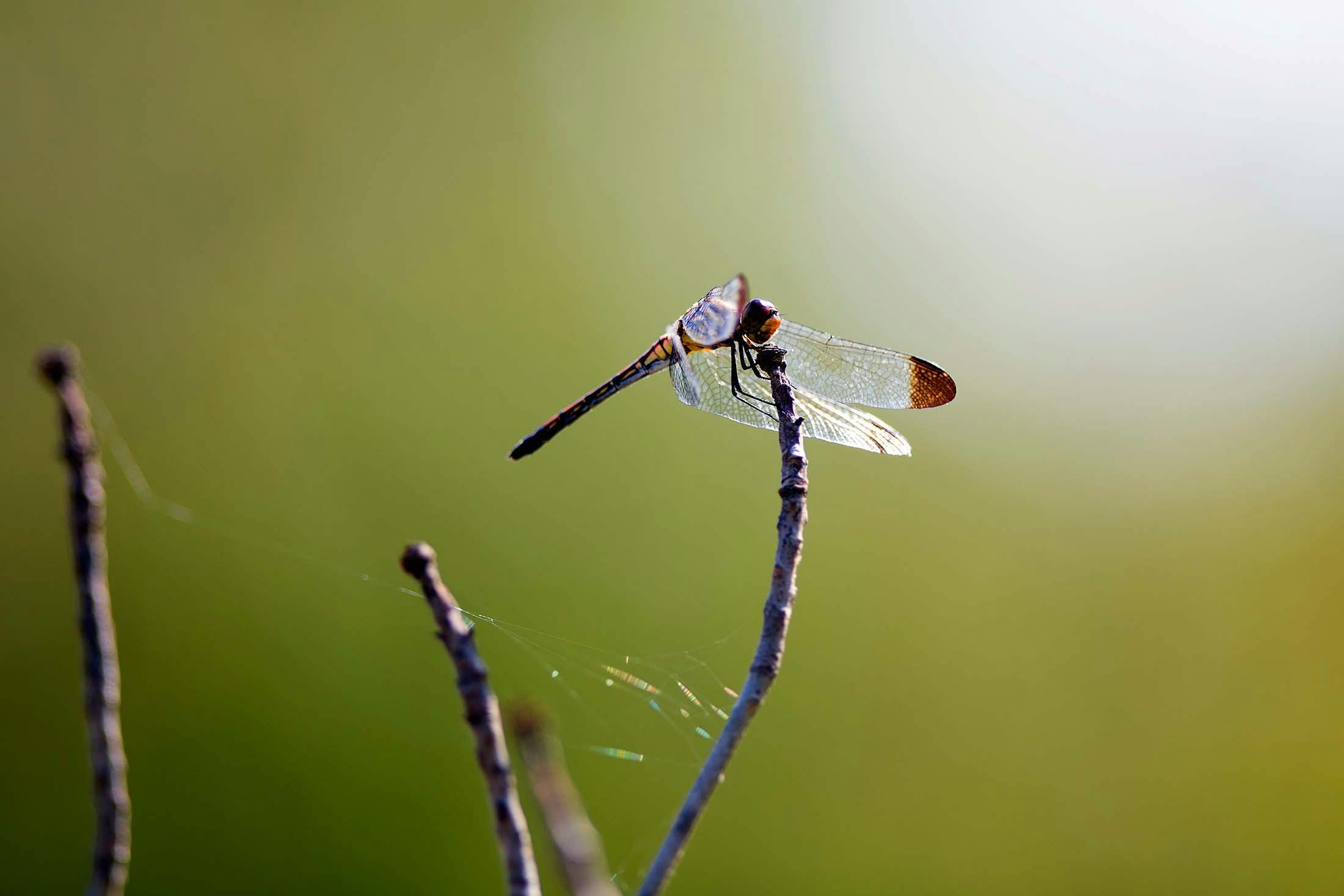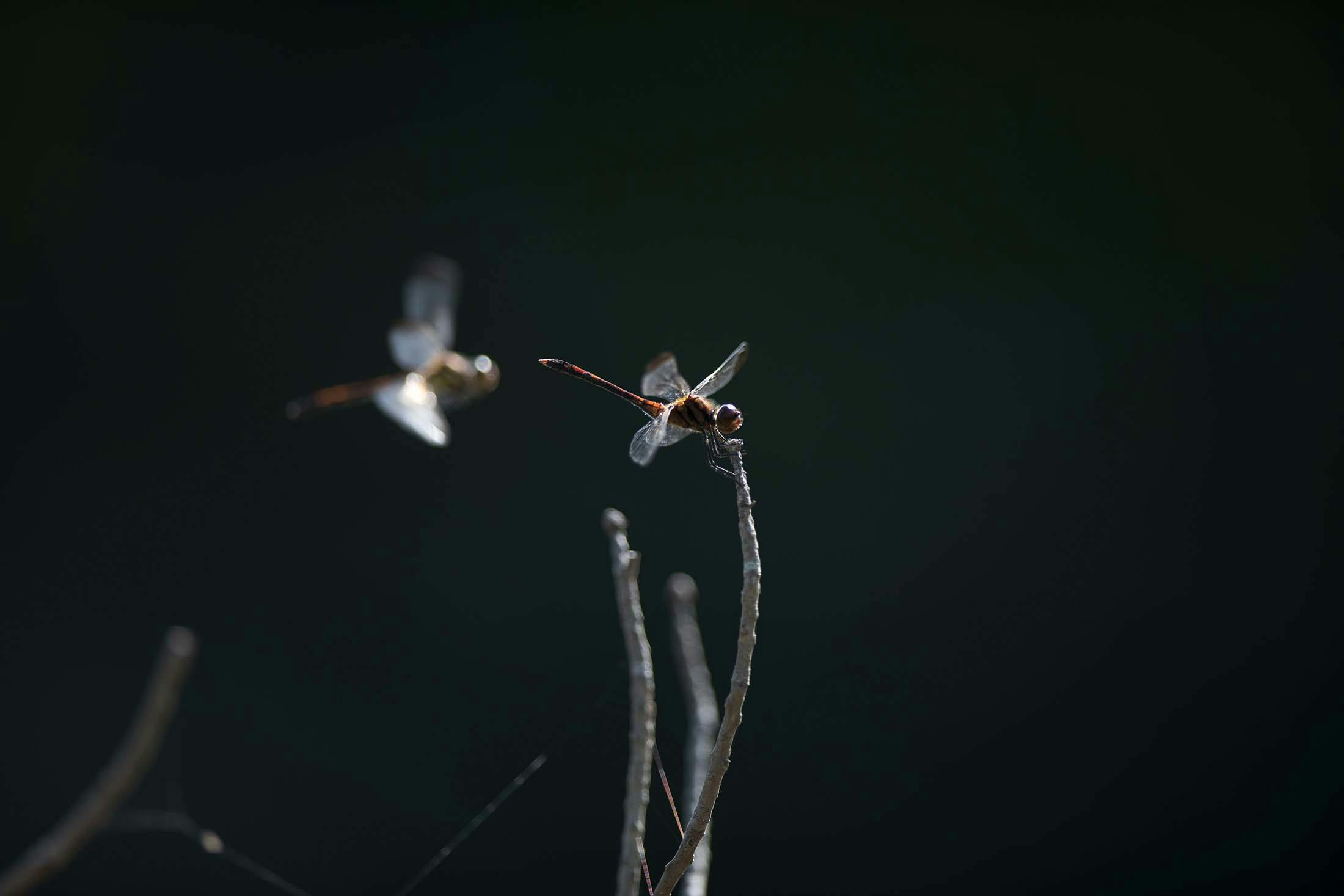What Does a Dragonfly Symbolize in Japanese Culture?
One autumn day, I was sitting outside at a cafe table in Tokyo, drinking coffee. A dragonfly landed on my crumpled napkin. Its body gleamed a vermillion red with an abdomen tufted with brown. The wings glittered in the sun. Like stained glass, they were webbed with sections and filled with transparent gossamer that glinted in each tiny pane, going clear to blue to pink and back as the sunlight refracted on them. We seemed to acknowledge each other, me with my contact lenses and it with its enormous goggles. The moment made me wonder: What does a dragonfly symbolize in Japanese culture?
Dragonfly nation
For more than a millennium, dragonflies have captured the Japanese imagination. With their iridescent wings and jewel-toned bodies, they have long been an object of fascination. Throughout the island of the dragonfly, this curious insect has inspired poets, geishas, artists and warriors for centuries.

In Japan, dragonflies are loved for their beauty, their place in nature and as a harbinger for the seasons — especially autumn. The dragonfly has inspired countless poems and songs. Dragonfly symbolism in Japan is also at the heart of many “kacho-ga,” or bird and flower paintings, by such famous artists as Kitagawa Utamaro and Katsushika Hokusai. And the samurai-turned-poet Yayu Yokoi wrote this haiku in the 1700s:
“A dragonfly
settles down to sleep
on the rod of an unskillful angler.”
Perhaps they have been so celebrated because there are so many species of dragonflies in Japan, wrote Irish writer and folklorist Lafcadio Hearn, who lived in Japan in the late 1800s. He named more than 30 types in his book “A Japanese Miscellany,” which has a chapter dedicated to dragonflies. Modern surveys like the guide “Dragonflies in Japan” estimate the count is even higher with more than 200 types of dragonflies.
Dragonflies are now generically called “tombo” in Japan, but this name is relatively new. An archaic name for dragonflies is “akitsu.” The country’s oldest history book from approximately A.D. 700, the Kojiki, even refers to Japan as “Akitsushima,” or dragonfly island. According to legend, the mythological Emperor Jimmu ascended a mountain some 2,600 years ago and declared that Japan resembled a dragonfly. Today, the traditional Japanese gardens that scatter the country symbolize the significance of nature in the nation’s culture and provide perfect dragonfly habitats.
What does a dragonfly symbolize in Japanese culture? It depends.

Symbol of the Japanese Samurai
Another old name for dragonfly is “katsumushi” — winning bug or victory insect. According to Ian Ropke, author of “Historical Dictionary of Osaka and Kyoto,” that’s because they’re known for their deft killing of their enemies. “They come quickly on a straight line to the pests they kill, and they don’t retreat,” he adds.
“Dragonflies symbolize agility, determinedness and victory for samurai warriors,” says Akihito Nakanishi, the Director of Programming for the Portland Japanese Garden in Oregon. My own samurai ancestors may have worn dragonfly motifs on their armor as they marched into battle. Some of these remaining suits are on display in museums, adorned with metalwork dragonflies melded to the helmets or painted onto the breastplate.
The meaning of dragonfly symbolism in Japan is so potent in the culture, in fact, that numerous brands have incorporated “tombo” into their moniker, borrowing the steadfast image of the beautiful bug. The most famous of these is probably Tombow Pencil Company, maker of one of Japan’s most popular and well-known writing implements that is found in every house. There are also companies that manufacture harmonicas, machine parts, tools, clothing and more, all bearing some form of the dragonfly’s name and symbol.
Speaking of everyday objects, I have my grandmother’s old coin purse, which is covered in a pattern of dragonflies. The company that made it, Inden-ya, has been in operation since 1582. “Inden” is a more than 400-year-old craft that uses Japanese paper and “urushi” lacquer to apply patterns to leather, and the technique was historically used to decorate samurai armor; today, it’s applied to wallets and luggage. The dragonfly is one of the brand’s traditional patterns. Tadatoshi Dezawa, from the associated Inden Museum, confirmed the dragonfly’s association with Japanese samurai.

Beloved by Japanese children
While the dragonfly is forever linked to Japan’s most famous warriors, this multifaceted insect also has a gentler side. “The dragonfly is cherished in Japan as an insect that protects babies,” adds Dezawa. “That’s because even if you didn’t have a mosquito net, if a dragonfly were present, it would eat any pests that came around, acting as guard to the baby.”
It makes sense, therefore, that dragonflies are beloved by children, too. Nearly a hundred years ago, poet Rofu Miki wrote “Akatombo,” or “red dragonfly,” that has since become a popular children’s song, named in 1989 as Japan’s favorite song, according to a poll by NHK, Japan’s public broadcaster. The song’s lyrics, translated from Japanese, begin, “Red dragonflies in the sunset/When was it that I watched them on someone’s back?/In mountain fields we gathered mulberries in little baskets/Was it just a dream?”
Children learn this song at school, and some towns even play it over loudspeakers to signal the end of the workday. Even dogs love it: I was visiting a friend in her city when the song came on at 5 p.m., and her dog Oribaa began howling, too. “He likes to sing along,” she said.
Between being the subject of songs, symbolizing the samurai and representing Japan as a whole, it’s a lot of pressure for such a small creature. But as I contemplated that dragonfly on the table, resting next to my coffee cup on a balmy day in October, it didn’t seem bothered. A breeze passed, and it was off again on the wind, flying straight and true to the next destination.
